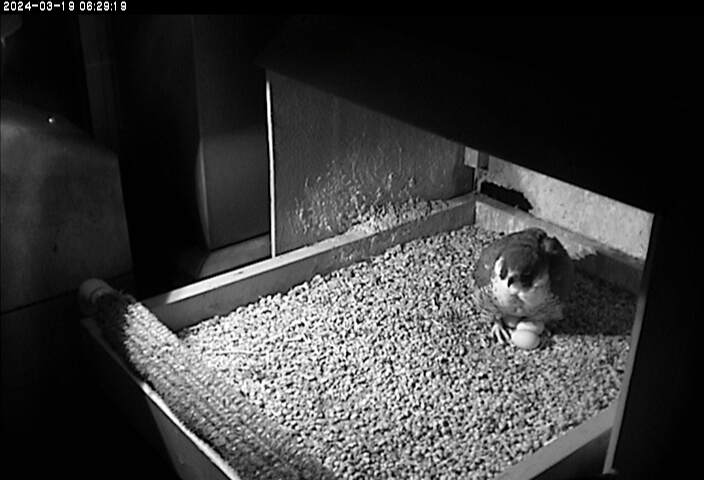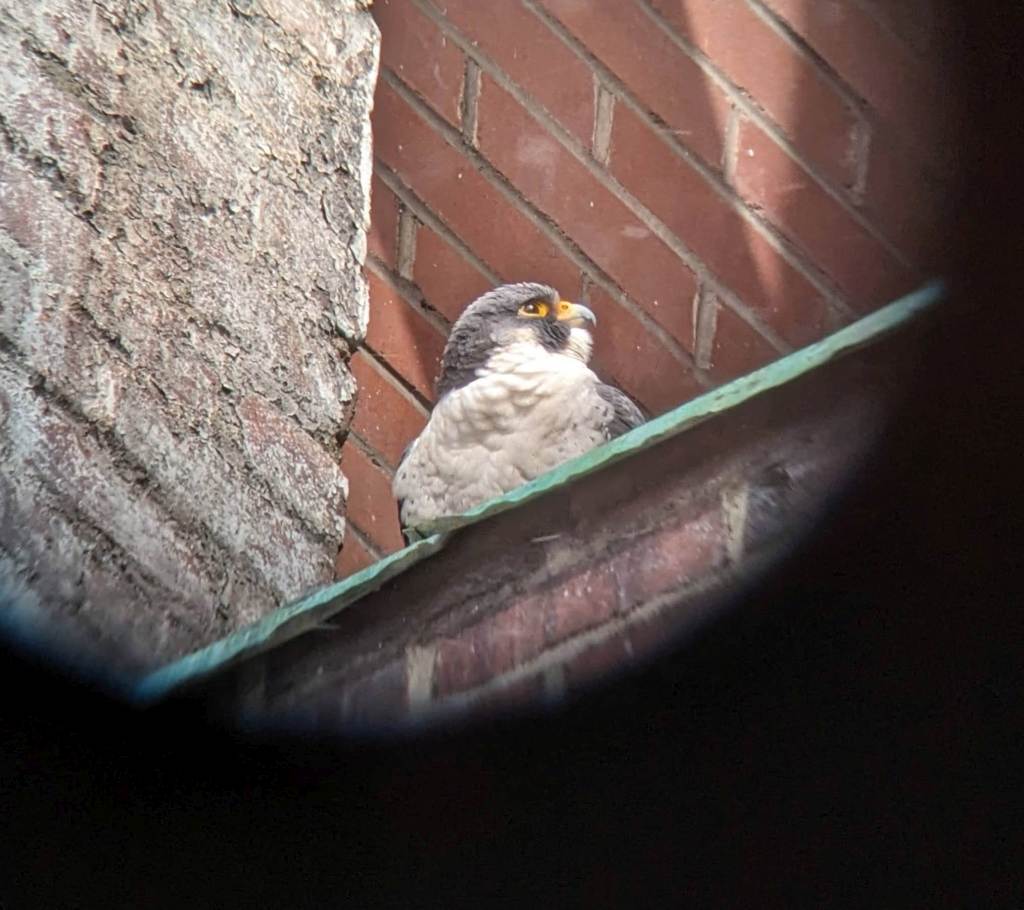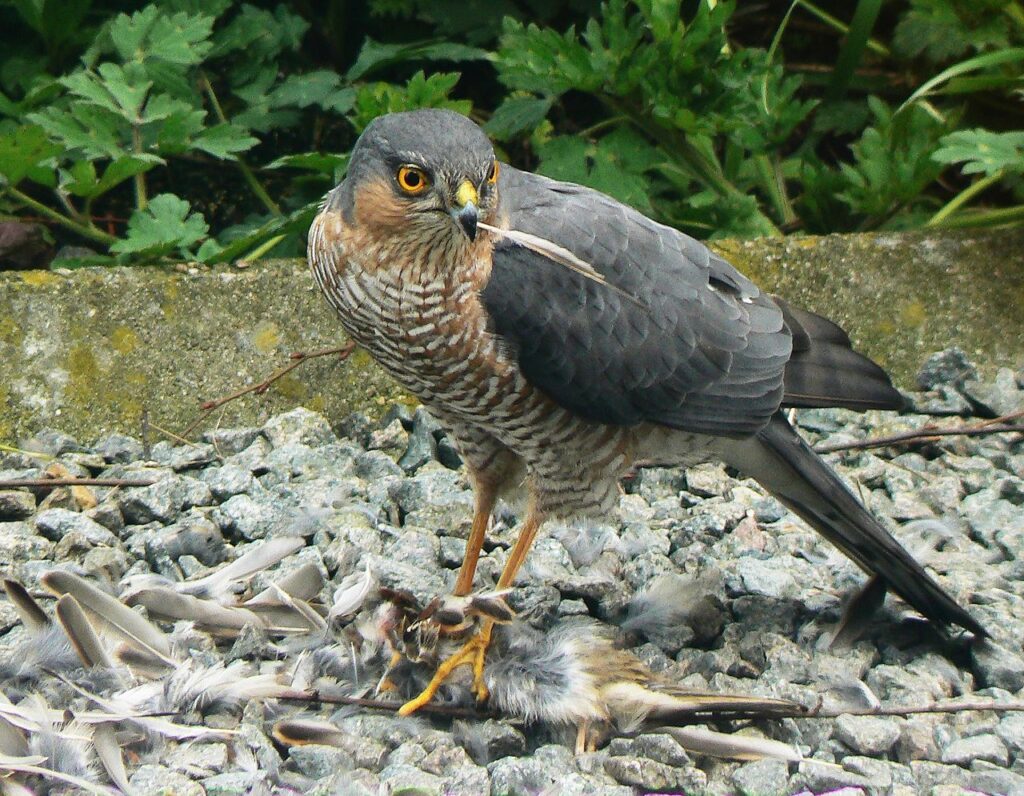
20 March 2024
Back in early February, Malcolm Kurtz stopped by East Liberty Presbyterian Church to photograph the resident peregrines. He found them carrying prey, perching on the steeple and hanging out together.
Malcolm first noticed the birds in December when “[he] saw an adult perched on the steeple from an overlook on Chatham’s main campus.” Good thing he followed up on it. The red aircraft hazard lights, which don’t look red from a distance, had fooled me so often that I stopped looking for raptors on the steeple. Malcolm’s photos show that a perched peregrine is about the same size as the lights but the bird is hard to see. If you’re near the steeple look carefully. How do peregrines manage to match every building they perch on?

While on site on 8 February Malcolm saw the female (at right) bring prey back to the church and eat it while the male looked on (at left). Notice that she is peachy compared to him.

Meanwhile Adam Knoerzer checks on the peregrines every day and has noticed they’ve changed their area of focus. On 14 March he recorded the male flying in with prey and, later, the pair flying together.
The peregrines have been spending a lot more time on the east face of the steeple.
This is the side of the steeple facing Highland Avenue. Around a month ago, I primarily spotted them on the opposite side of the steeple and south face, but they have tended to perch over on this face in the past week or two.
— email from Adam Knoerzer, 14 March 2024

- Green = floodlight where female likes to perch.
- Red = plucking perch where male prepares food for female.
- Blue = possible peregrine nest zone. Shows sticks leftover from old red-tailed hawk nest. Female often perches here at sundown. In first video below, male drops off food at this location.
Their change of venue probably reflects the lack of substrate anywhere else on the structure. This location is probably the only place that has an obstruction to prevent their eggs from rolling off the building.
If you want to see the East Liberty Presbyterian peregrines look from the Highland Avenue side first.

(credits are in the captions)


































